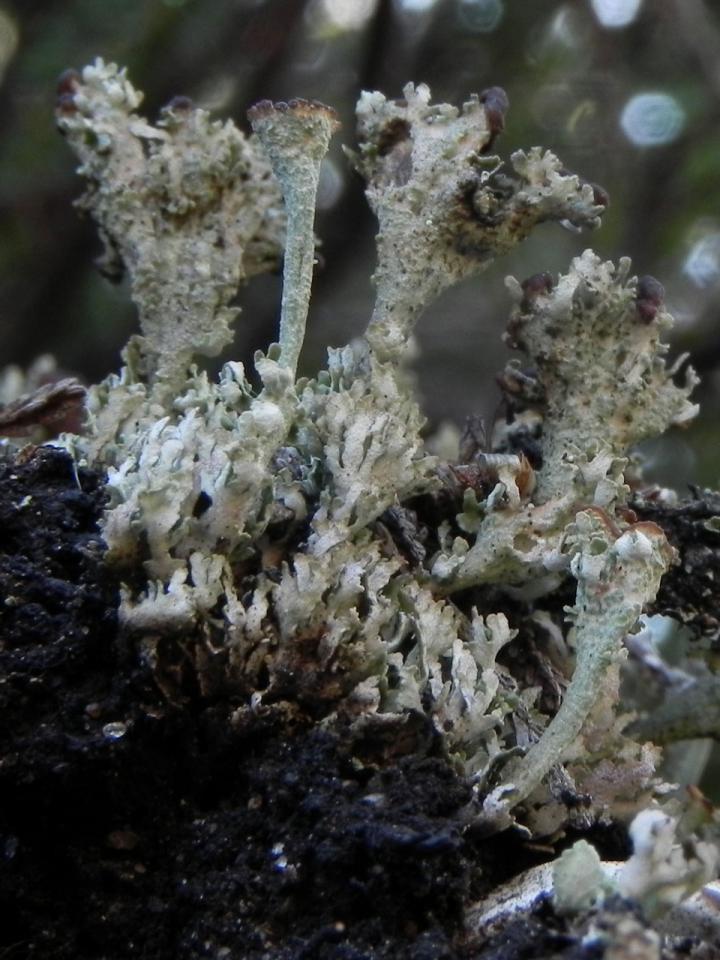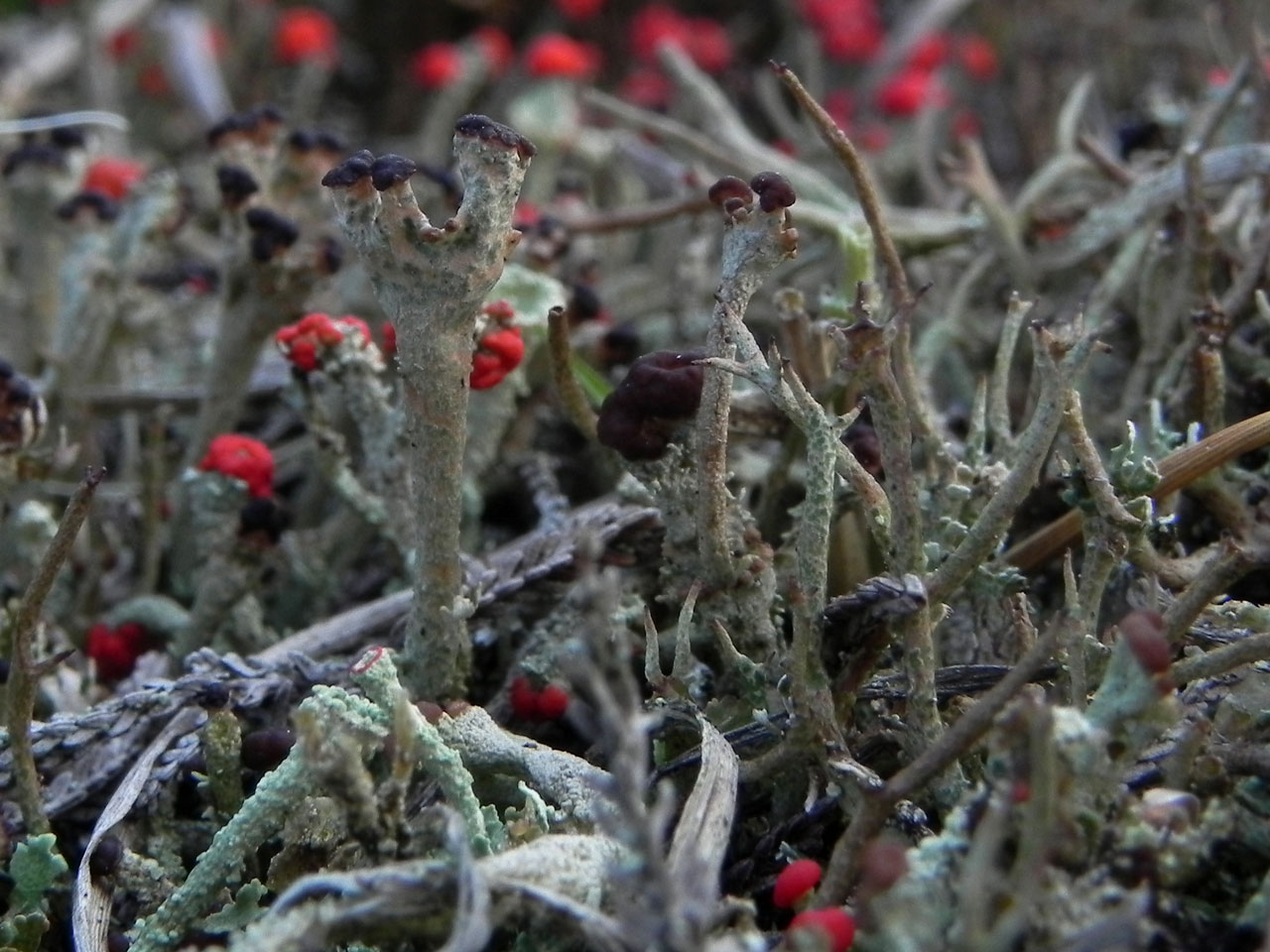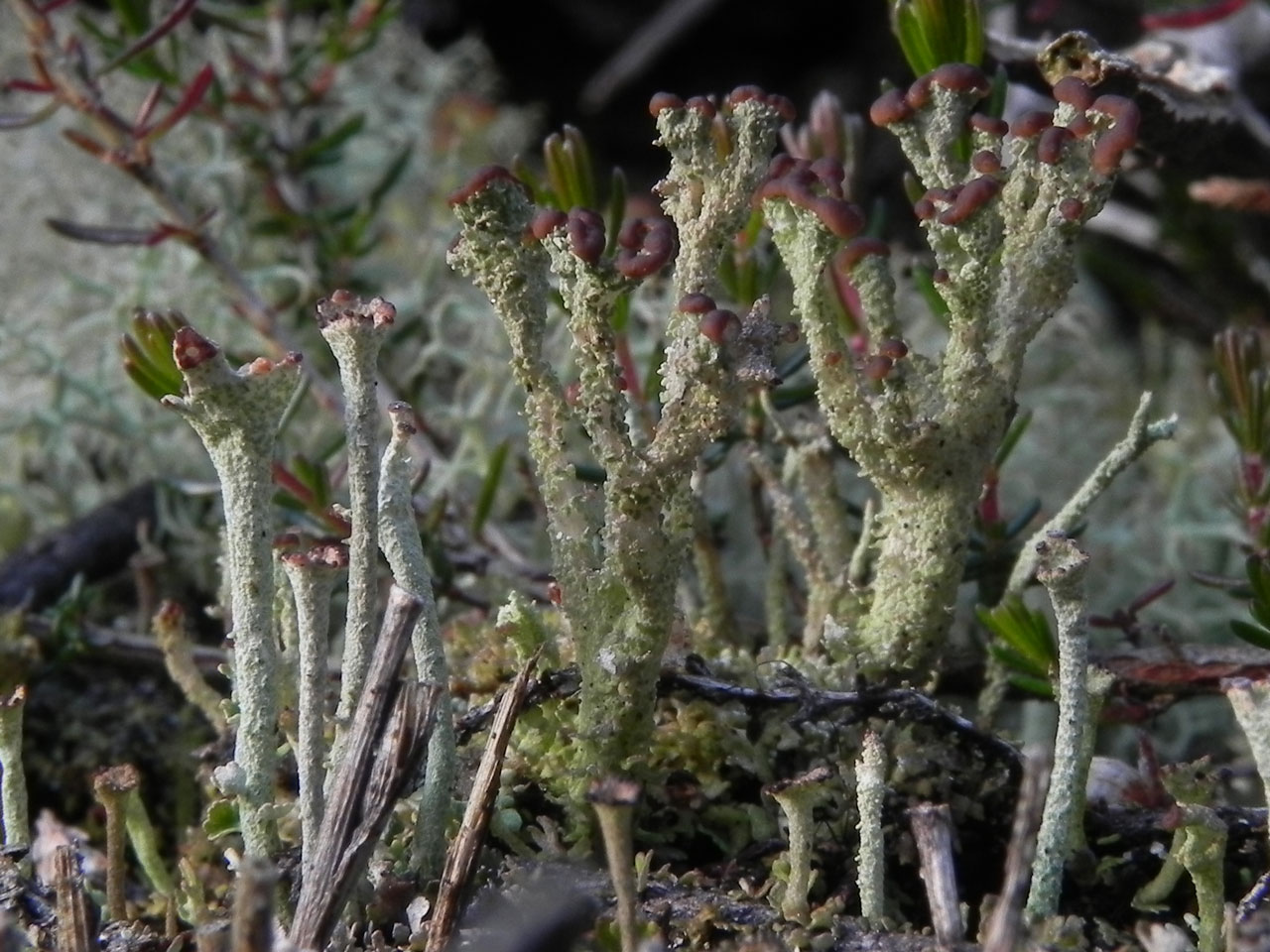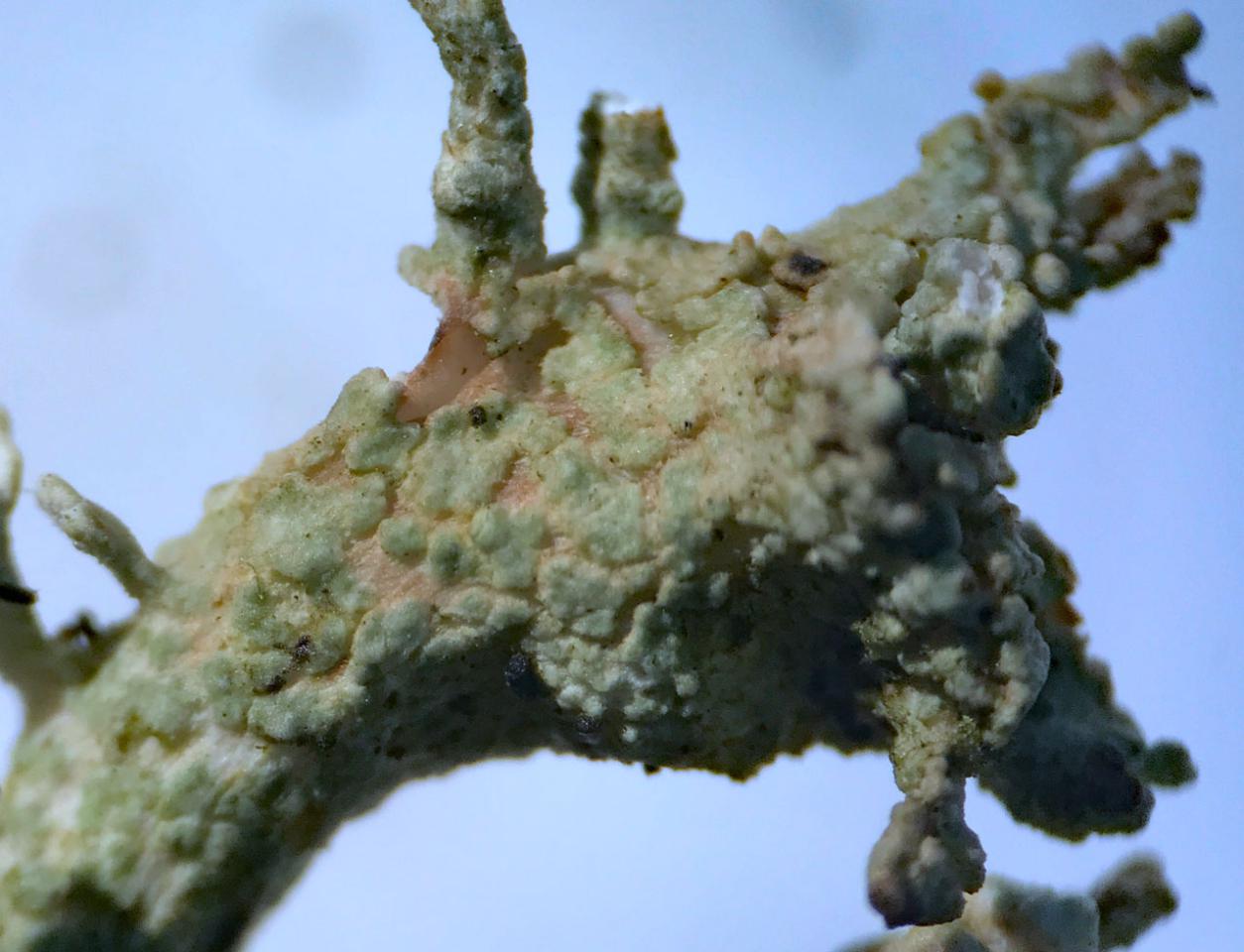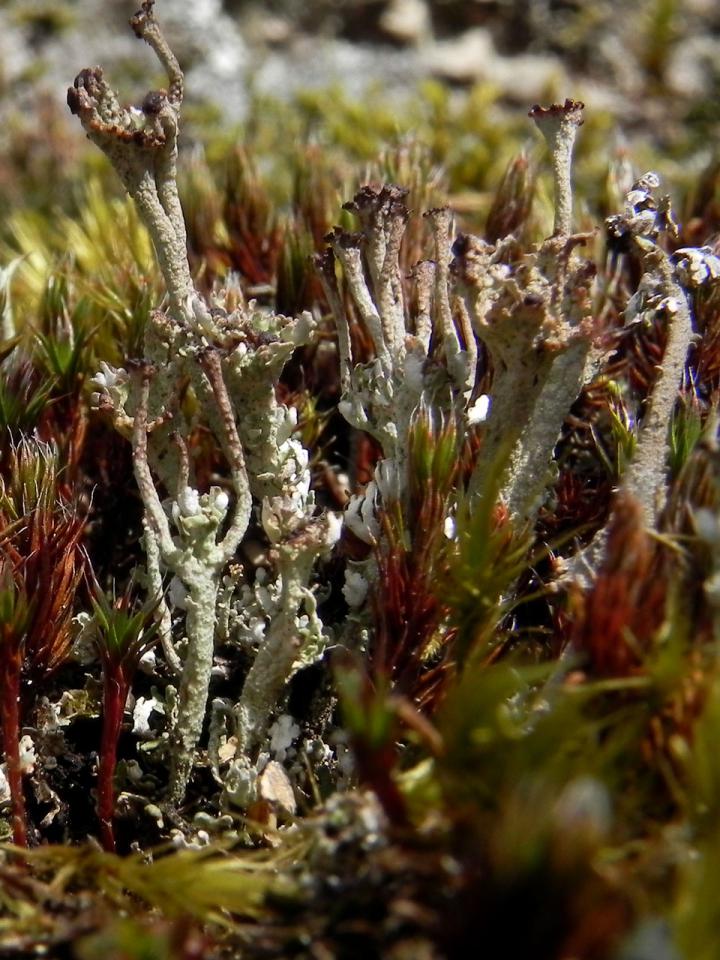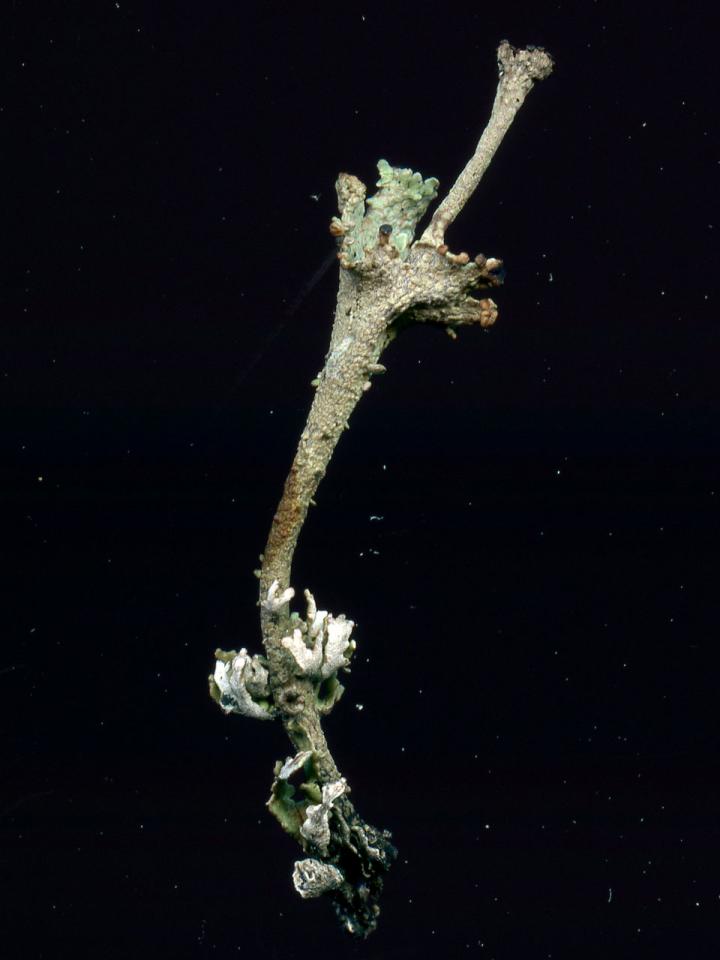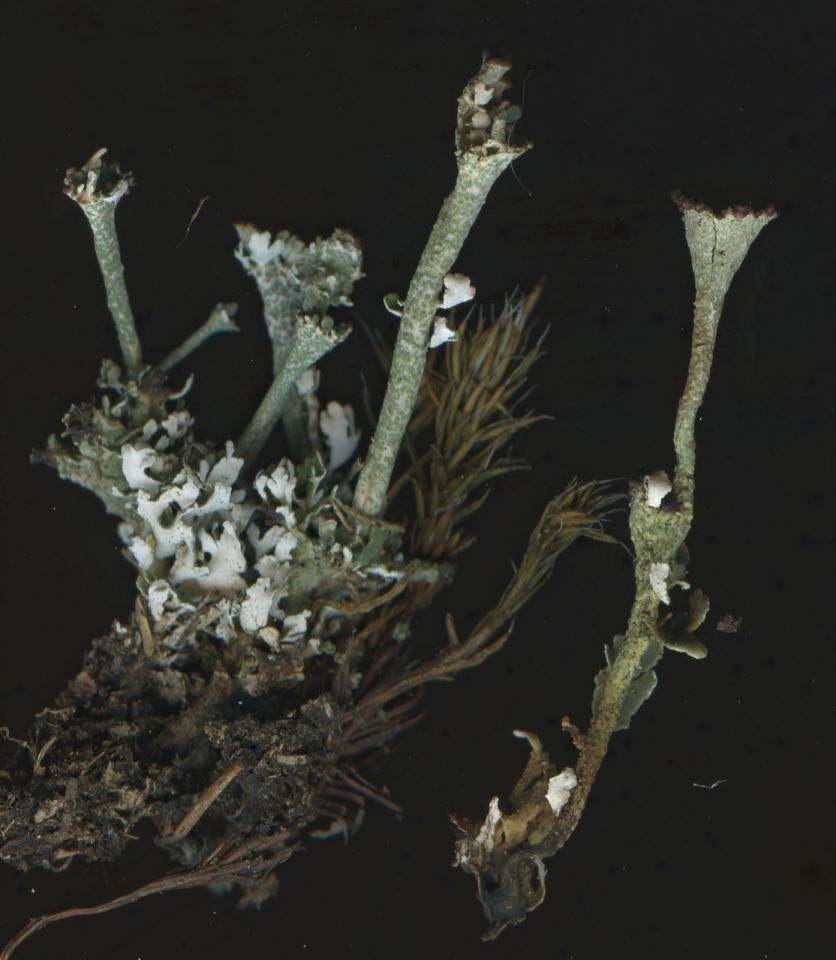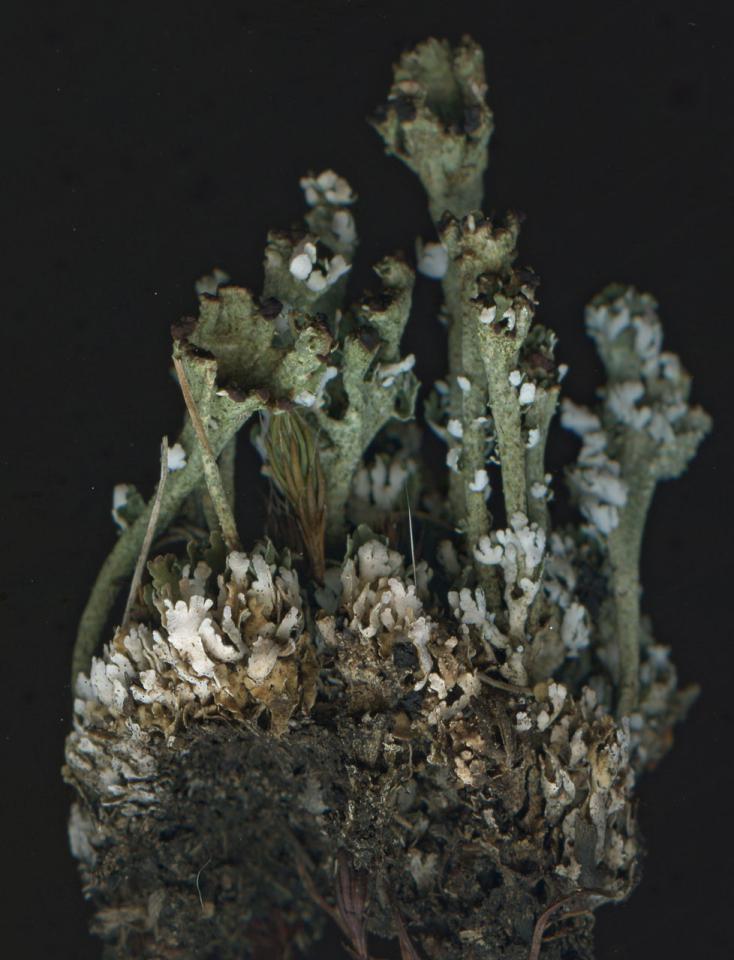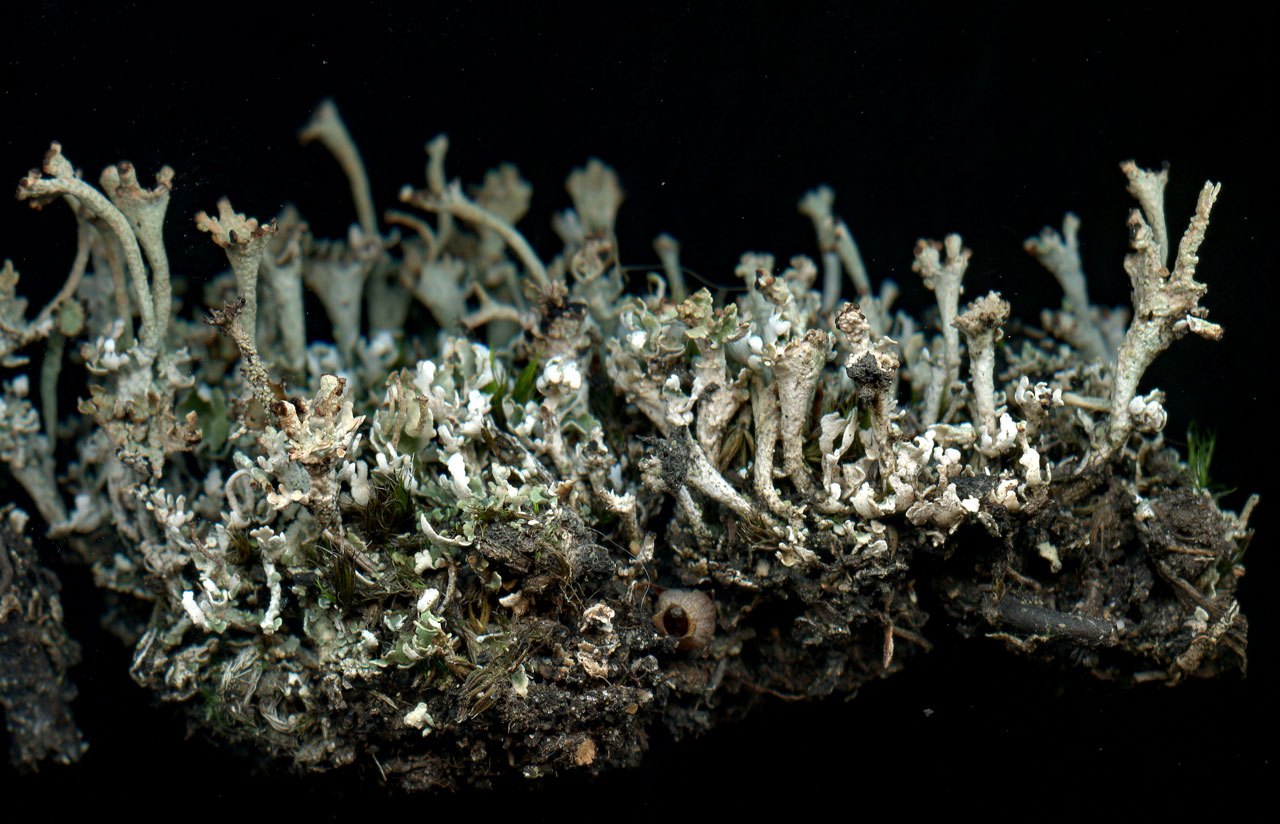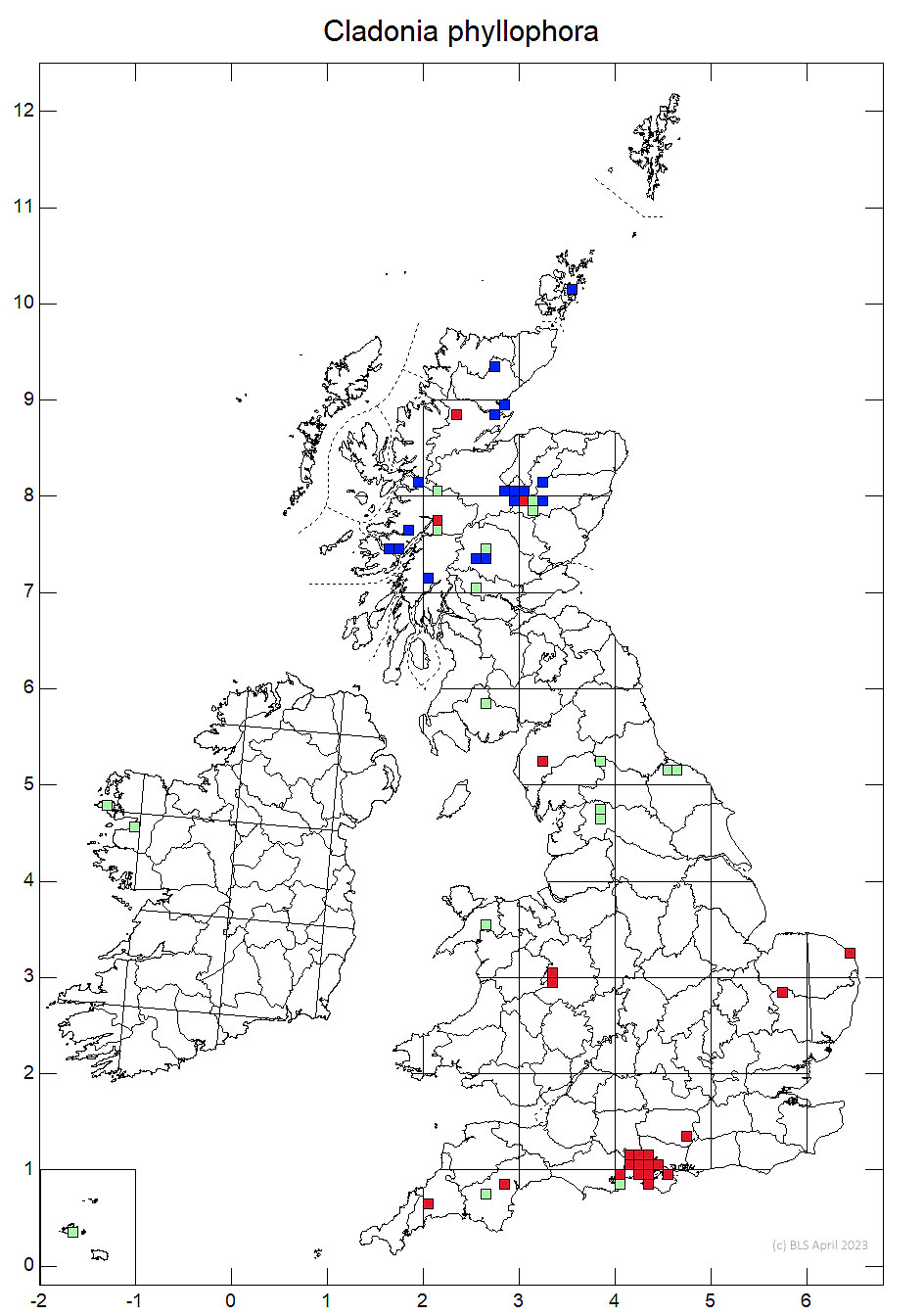A scarce, but certainly overlooked, Stacking Cup Cladonia, potential overlooked as past descriptions have stressed features only seen well in strongly developed thalli. A perennial problem with Cladonia; how to identify young and less well developed material. A feature seen most material is the subarachnoid surface between the areolae on the podetia. As the lichen develops then blacken bases and irregular proliferations from the cup rim become more obvious and in prime material the proliferations form extensive ± interlocking tiers. Found in moorland and mossy rocks in montane situations and high-quality lowland heath.
Podetia 1–5 cm tall, the surface in part subarachnoid, ± coarsely areolate especially toward the apices, matt, pale grey-brown, notably appearing more areolate towards the base, with contrasting blackened decorticate areas notably appearing pale-maculated; cups irregular, with often extended and uneven proliferation from irregularly dentate margins, which form extensive ± interlocking tiers when well developed; cups and lower parts of podetia variously squamulose. Basal squamules mat forming, strongly dissected in young material, becoming ± scattered, small, ± rounded at maturity, greenish grey on the upper side, white below. Apothecia rare; apothecia and pycnidia terminal on podetia, brown. Thallus C–, K–, KC–, Pd+ red, UV– (fumarprotocetraric acid).
A polymorphic species, mature podetia are distinctive forming compact turgid interlocked clusters of proliferating, irregular podetia, the lower part with pale areoles on a black necrotic medulla. Many occurrences, however, are of younger or less well developed material in which the proliferations are much less prominent, such as seen in the comparisons between modern pictures and herbarium specimens from the Netherlands link. This is much less distinct and easily over looked. The subarachnoid surface between the areolae is possibly the most distinctive feature on younger podetia. The blackened base is absent in the youngest material and not especially prominent in moderately grown material. Sterile squamule mats occur but their identity can not easily be confirmed.
Sometimes confused with Cladonia ramulosa but characteristic pale grey spotting on a black surface of the cortex towards the base of the podetia is absent in that species. It also typically has significant decorticate patches on the podetia that are lacking in C. phyllophora and has nothing like the subarachnoid surface between the areolae seen in C. phyllophora. C. gracilis has more regular cups, a smooth, non-arachnoid cortex and the podetia have uniformly brownish black bases. C. trassii has central proliferations and contains atranorin (K+ yellow). C. cervicornis is the species most similar to less well developed C. phyllophora but has proliferations consistently form the centre of the cup, the podetia lack the subarachnoid surface between the areolae and the underside of the basal squamules have brown tinges. Mature material of Cladonia pulvinata can resemble C. phyllophora, with similar subarachnoid surfaces between the areolae and black bases in mature podetia, but is separated by the Pd + yellow reaction and by proliferating more from the centre of the cups.
On moorland and mossy rocks in montane situations and high-quality lowland heaths.

Rare and local with records from S. and S.W. England, Norfolk, Shropshire & N. Scotland; old records from N. Wales. Certainly under-recorded.
Britain: Near Threatened
Scotland: Priority Taxon for Biodiversity in Scotland
Pino-Bodas, R., Sanderson, N., Cannon, P., Aptroot, A., Coppins, B., Orange, A. & Simkin, J. (2021). Lecanorales: Cladoniaceae, including the genera Cladonia, Pilophorus and Pycnothelia. Revisions of British and Irish Lichens 19: 1-45. Link
Text by Neil A Sanderson based on Pino-Bodas et al (2021)

